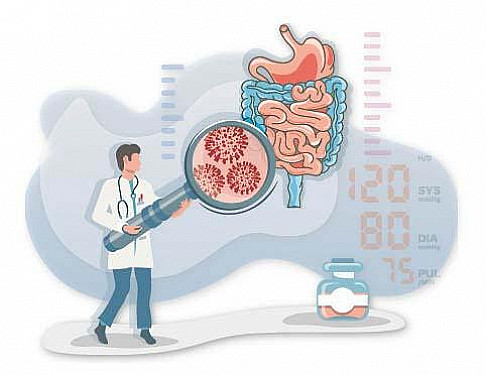Reducing your stroke risk after a transient ischemic attack (TIA)
- Reviewed by Howard E. LeWine, MD, Chief Medical Editor, Harvard Health Publishing; Editorial Advisory Board Member, Harvard Health Publishing

The symptoms of a transient ischemic attack (TIA) can pass quickly, but that doesn't mean you should put the episode in the rearview mirror. A TIA is a warning. Treat it as an opportunity to reduce your risk of going on to develop a full-blown stroke.
What is a TIA?
A transient ischemic attack is a temporary lack of blood flow (and therefore oxygen) in a part of the brain. TIAs, which are sometimes called ministrokes, are very common — they happen to at least 240,000 Americans every year.
When you have a TIA, one or more of the arteries that supply blood to your brain becomes blocked, by either plaque or by a blood clot. This usually improves within minutes, avoiding permanent brain damage.
Transient ischemic attack symptoms are the same as those of a stroke, but last only for a few minutes or hours. The American Stroke Association uses the acronym FAST to help people spot signs of a TIA or stroke. They include:
- F – Face drooping: You may see one side of the face droop, or it may look numb. If the person smiles, it may appear uneven.
- A – Arm weakness: One arm may be weak or numb. If you raise both arms, one may drift downward.
- S – Speech difficulty: Speech may be slurred.
- T – Time to call 911: If you notice any of the above symptoms, call 911 immediately.
A TIA should never be ignored. It's a warning that you're at high risk for a full-blown stroke.
TIA or full-blown stroke?
A TIA is a stroke in which the blockage is temporary, and symptoms typically improve within an hour. Since there's no way to tell in the moment if your symptoms are due to a TIA or a full-blown stroke, always treat it as an emergency. Call 911 to get help right away.
Stroke risk after a TIA
It's important to take a TIA very seriously. Even though the symptoms are temporary, you are at a much higher risk for developing a full-blown stroke. About one-third of those who have a TIA will eventually go on to have a full-blown stroke. The risk is highest during the first 48 hours: up to 10% of people with a TIA go on to have an actual stroke within a couple of days. Your risk of stroke may also be higher if you have any of these risk factors:
- type 2 diabetes
- age 60 years or older
- high blood pressure
- weakness on one side of your body during your TIA
- speech problems during your TIA
- TIA symptoms that lasted for an hour or longer
- existing heart disease (severely clogged or narrowed arteries).
Medications to reduce stroke risk after a TIA
You usually do not need to be hospitalized for a TIA. You will, however, be prescribed certain medications to reduce your risk of having a full-blown stroke.
Antiplatelet medications. Your doctor may want you to take a medication that prevents platelets (cell fragments that help blood clot) from clumping together and clogging up arteries, raising the risk of full-blown stroke. Antiplatelet drugs include aspirin, clopidogrel (Plavix), and ticagrelor (Brilinta).
Sometimes, two antiplatelet medications are used together for a short time. This is called dual platelet therapy. After a few weeks, you continue on only one antiplatelet medication. A 2023 study published in the New England Journal of Medicine found that this approach led to a lower risk of stroke within 90 days of a mild stroke or high-risk TIA than aspirin alone.
Anticoagulants. If you also have atrial fibrillation — a type of irregular heart rhythm — then your doctor may recommend that you take an anticoagulant. Sometimes referred to as blood thinners, these prescription medications help to prevent blood clots from forming. Today, doctors most often prescribe one of the direct oral anticoagulants (DOACs), such as apixaban (Eliquis), dabigatran (Pradaxa), edoxaban (Savaysa), or rivaroxaban (Xarelto).
Your doctor may also prescribe medication to treat other underlying conditions that raise your risk of stroke, such as high blood pressure or high cholesterol.
Lifestyle changes to help prevent a stroke after a TIA
About 80% of strokes are preventable, according to the CDC. The following lifestyle changes can help reduce your risk of having a full-blown stroke after a TIA.
Diet
A healthy, plant-based diet rich in foods like leafy greens, whole grains, and beans appears to lower overall stroke risk by about 10%, according to a Harvard study published in the journal Neurology. The CDC recommends that you also limit the amount of sodium, or salt, in your diet to lower your blood pressure. You should also avoid or limit saturated fat, which raises cholesterol levels and is found in foods like full-fat dairy, fried foods, and red meat.
Exercise
The CDC recommends all adults get at least 150 minutes of moderate intensity aerobic activity such as walking each week. If that seems daunting, keep in mind that small bursts of exercise like walking the dog contribute to this overall goal. Try to stay on your feet as much as you can, too. A study published in JAMA found that people who sat for more than 13 hours a day had a 44% increased risk of stroke.
Monitoring and managing blood pressure
High blood pressure is the number one controllable risk factor for stroke, according to the American Heart Association. Over time it damages arteries, which can lead to blockages and blood clots. If you've had a TIA, it's important to make sure your blood pressure is under control. Ways you can do this include:
- eating a low salt diet like the DASH diet (try to limit yourself to no more than 1,500 milligrams of sodium a day)
- maintaining a healthy weight
- exercising regularly
- limiting alcohol
- not smoking (and quitting, if you do).
If your blood pressure is already elevated (higher than 130/80 mm Hg), your doctor may prescribe blood pressure lowering medication.
Recognizing the warning signs of stroke: When to seek immediate help
When it comes to stroke, every second counts. If you or a loved one experience any of these symptoms, call 911 immediately:
- sudden numbness or weakness on one side of your body
- confusion
- trouble speaking
- trouble seeing
- trouble walking
- sudden severe headache.
About the Author

Hallie Levine, Health Writer
About the Reviewer

Howard E. LeWine, MD, Chief Medical Editor, Harvard Health Publishing; Editorial Advisory Board Member, Harvard Health Publishing
Disclaimer:
As a service to our readers, Harvard Health Publishing provides access to our library of archived content. Please note the date of last review or update on all articles.
No content on this site, regardless of date, should ever be used as a substitute for direct medical advice from your doctor or other qualified clinician.















